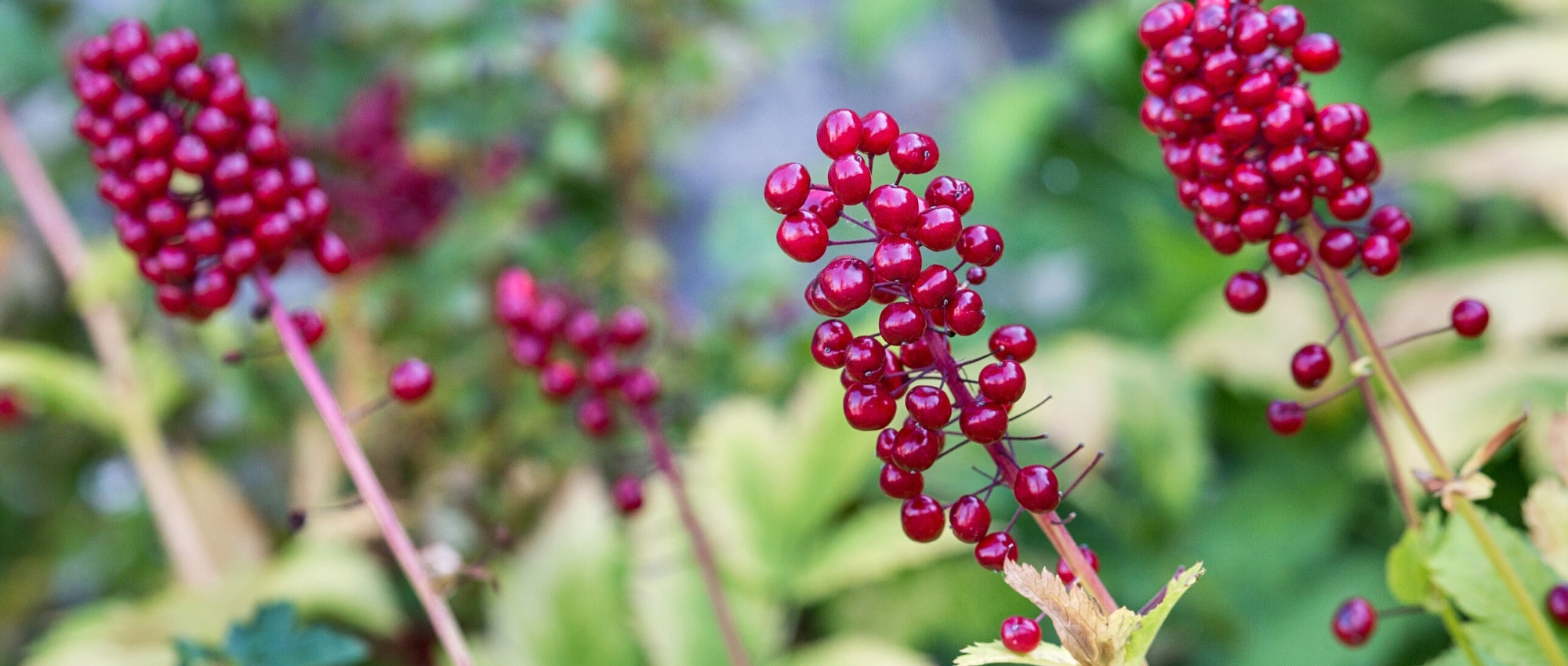
The most beautiful perennials with decorative fruits
Discover our selection
Contents
Perennials are generally grown to enjoy their flowering, sometimes also for their decorative foliage… However, some of them also produce very beautiful fruits, which extends their interest once the flowers have faded! They can bear red, blue, black, or white berries… or dry fruits (achenes, capsules…), with a very natural and wild style. Most of the time, ornamental perennials offer rather discreet fruits; it is usually the bushes that are cultivated for their decorative berries (Callicarpa, Symphorine, Cotoneaster, Pyracantha…)…
Decorative berry perennials are much rarer and less well-known. Be careful, their fruits can be very toxic and should not be consumed! Discover in this guide our selection of the most beautiful perennials with decorative fruits.
Red berry perennials
They are the most numerous. With their scarlet hue, these fruits are perfect for bringing vitality and colour to a flowerbed. It is a warm shade that stands out from afar! Depending on the species, they can be borne in dense and massive spikes, solitary, or in loose and airy clusters, creating a more delicate and natural effect.
- The Araceae such as the Calla palustris, the Arum italicum, or the Arisaema produce bright red fruits gathered in dense spikes on the axis of the spadix. Their berries are toxic as they contain calcium oxalate crystals.
- The Maianthemum bifolium is a rhizomatous woodland perennial that produces a beautiful light white flowering spike in spring, followed by small clusters of white berries that turn red.
- The Canadian Dogwood, Cornus canadensis, is a spreading perennial that bears at the centre of its whorled leaves, forming a sort of cradle, a small cluster of 4 to 7 bright red berries.
- The lovely small white bells of Lily of the Valley, Convallaria majalis, give way to charming little red balls, pendulous, each attached to the floral stem by a pedicel.
- The Actaea rubra and the Smilacina racemosa produce red berries gathered in loose and airy clusters.
- The Indian Strawberry, Duchesnea indica, gets its name from its fruits that closely resemble small strawberries (more rounded), but have no culinary value. They are edible but tasteless and can cause digestive issues if consumed in excess. Like strawberries, it is actually a pseudocarp (not a true berry), formed by the fleshy floral receptacle.
- As for the Iris foetidissima, it produces capsules that open in three valves to reveal beautiful fleshy orange-red seeds.
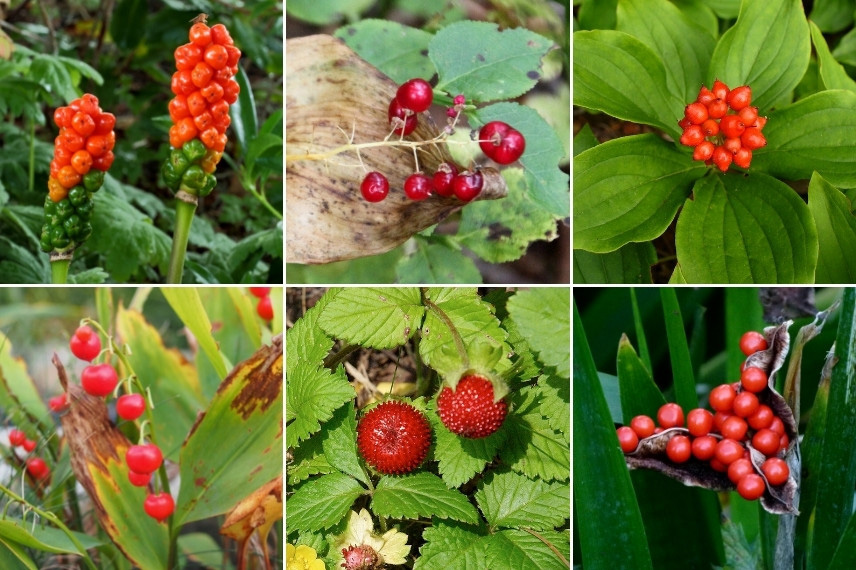
The red berries of Arum italicum, Maianthemum bifolium, Cornus canadensis, Convallaria majalis, Duchesnea indica, and Iris foetidissima (photos: Dominicus Johannes Bergsma / Bjoertvedt / Neelix / Agnieszka Kwiecien / Wouter Hagens / Dinkum)
Blue-berried perennials
Much rarer than the previous ones, blue berries are surprising and highly decorative. Their soft, soothing hue is appreciated, and they pair beautifully with the green of the leaves.
- The Ophiopogon japonicus is a small perennial ground cover with fine, dark green leaves, whose discreet flowering gives way to small, highly decorative turquoise blue fruits.
- The Dianella tasmanica is an exotic perennial related to Phormium, producing splendid violet-blue berries borne in loose clusters on tall stems. They follow small blue flowers with a yellow centre.

The berries of Ophiopogon japonicus and Dianella tasmanica (photos: Alpsdake / Stickpen)
Discover other Perennials
View all →Available in 1 sizes
Available in 0 sizes
Available in 1 sizes
Available in 1 sizes
Available in 1 sizes
Available in 2 sizes
Available in 1 sizes
Available in 1 sizes
Available in 1 sizes
Available in 1 sizes
Black berry perennials
They are more discreet than red, blue, or white berries, and are very elegant, resembling small black pearls.
- The Polygonatum, or Solomon’s Seal, is a beautiful woodland perennial that produces white bell-shaped flowers, followed by rounded black or blue-black berries. They are toxic to humans but appreciated by birds!
- The Ophiopogon planiscapus is a rhizomatous perennial that forms lovely small clumps of fine green or black leaves and offers small, very discreet campanulate flowers in summer. These give way to globular, fleshy berries, 3 to 5 mm in diameter, with a beautiful glossy black hue, slightly bluish.
- The Liriope muscari is also a small perennial with fine, gramineous leaves. It bears spikes of purple flowers in summer, followed by spherical purple-black fruits.
- The Actaea spicata produces clusters of shiny black berries starting in July.
- The Phytolacca americana, also known as American Pokeweed, is a perennial that produces beautiful black fruits clustered on red pedicels. However, it is an invasive and toxic exotic plant, so we do not recommend cultivating it.

The black berries of Polygonatum odoratum, Liriope muscari, and Actaea spicata (photos: AnRo0002 / Yasuaki Kobayashi / gailhampshire)
White berry perennials
Rare, white-berried perennials bring brightness and easily blend with most colours in the garden! White is the colour of purity and elegance.
- The Actaea pachypoda ‘Misty Blue’ is a woodland perennial that produces clusters of very unique white berries, borne on bright red pedicels. They pair beautifully with its blue-tinged foliage.
- Also discover the Triosteum pinnatifidum, a little-known Chinese perennial that offers surprising fluffy white fruits!

The fruits of Actaea pachypoda and Triosteum pinnatifidum (photos: Cbaile19 / Dominicus Johannes Bergsma)
Original fruiting perennials: feathery achenes, capsules, etc.
Beyond the colourful berries, many perennials produce dry fruits, usually brown and discreet, but sometimes very original and decorative! These fruits are perfect for enlivening naturalistic gardens, alongside grasses and perennials with delicate flowering.
- Pulsatilla (Pulsatilla vulgaris), Dryas (Dryas sp.) and some avens (Geum sp.) produce feathery achenes, with a very natural and light style! The seeds are topped with long bristles: like dandelions, this allows them to be carried away by the wind and reseed far from the original plant.
- Acaena, also known as Bursaria, forms a beautiful groundcover whose summer flowering is followed by curious bristly fruits. These are spherical achenes, about 2 cm in diameter, covered in spiny hairs, which are not sharp, usually coppery or reddish, allowing them to cling to the fur of animals.
- Perennial Lunaria (Lunaria rediviva) produces very beautiful translucent silver-white siliques, but more elongated than its cousin, the Money Plant. Once dried, these siliques can easily be incorporated into floral displays!
- Asclepias produce original fruits, elongated and containing brown seeds attached to long white bristles, which allow them to be carried away by the wind. The most original fruits are those of Asclepias syriaca, which resemble little parakeets.

Pulsatilla vulgaris, Dryas × suendermannii, Acaena magellanica and Lunaria rediviva (photos: Meneerke bloem / Ghislain118 / El Grafo / Dages)
- Subscribe!
- Contents
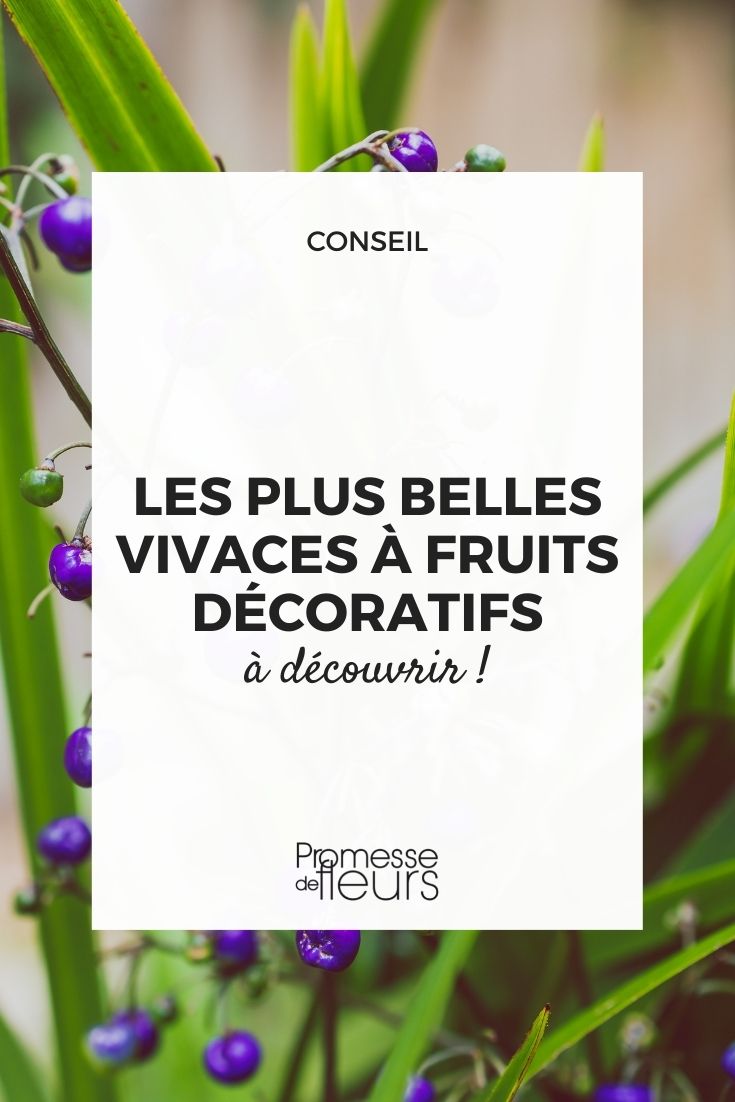































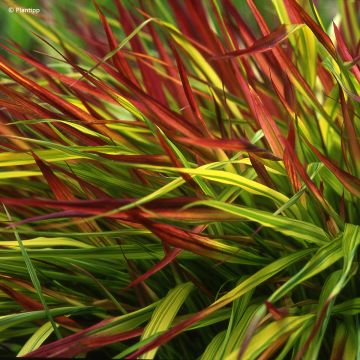


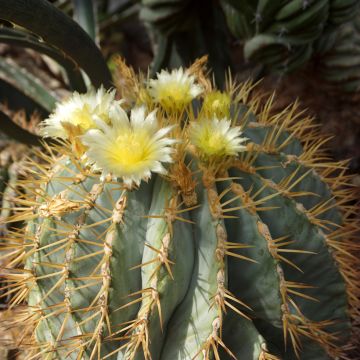


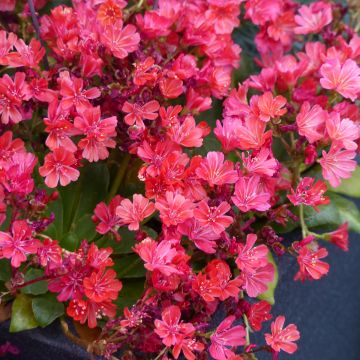
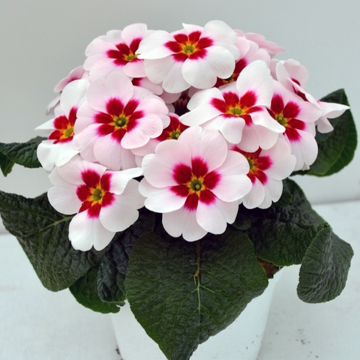

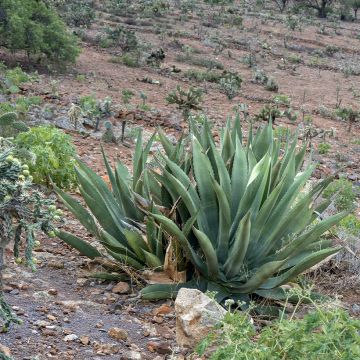
Comments